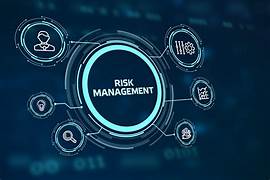Organizations must acknowledge the risks associated with implementing AI systems to use the technology ethically and minimize liability. Throughout history, companies have had to manage the risks associated with adopting new technologies, and AI is no exception.
Some AI risks are similar to those encountered when deploying any new technology or tool, such as poor strategic alignment with business goals, a lack of necessary skills to support initiatives, and failure to secure buy-in across the organization. For these challenges, executives should rely on best practices that have guided the successful adoption of other technologies. In the case of AI, this includes:
- Identifying areas where AI can help the organization meet its objectives.
- Developing strategies to ensure the necessary expertise is available to support AI programs.
- Implementing strong change management policies to facilitate and accelerate enterprise adoption.
However, AI introduces unique risks that must be addressed head-on. Here are 15 areas of concern that can arise as organizations implement and use AI technologies in the enterprise:
- Lack of Employee Trust Can Inhibit AI Adoption: Not all employees are ready to embrace AI. For example, a 2023 KPMG study found that 61% of respondents were ambivalent or unwilling to trust AI. Without trust, AI implementations may fail, as seen when workers don’t trust an AI system’s decision, leading to its rejection despite accuracy.
- AI Can Have Unintentional Biases: AI systems, driven by algorithms that identify patterns in data, can produce biased results if the data or algorithms are problematic. This is not hypothetical; real-world examples show how biased training data can lead to discriminatory outcomes, such as over-predicting criminality in certain communities.
- Biases and Errors Are Magnified by AI’s Scale: While human errors are limited by the volume of work done before being corrected, AI systems can amplify these mistakes exponentially due to their large-scale processing capabilities.
- AI Can Be Delusional: Most AI systems are probabilistic, meaning they provide the most probable response in a given scenario, which may not always be accurate. This phenomenon, known as AI hallucinations, highlights the importance of vetting AI outputs.
- AI Can Create Unexplainable Results, Damaging Trust: Explainability, or the ability to understand how and why AI systems make decisions, is crucial for validating results and building trust. However, it’s not always possible, especially with complex AI systems, which can hinder AI adoption despite its benefits.
- AI Can Have Unintended Consequences: AI’s potential for unintended consequences is significant, as highlighted by global leaders. For instance, AI might worsen inequality or result in ethical dilemmas, such as the misuse of AI-based monitoring systems.
- AI Can Behave Unethically or Illegally: Some AI applications may result in ethical challenges, such as using AI for employee monitoring, which could be seen as invasive or overreaching. Legal issues also arise, as seen in ongoing lawsuits over unauthorized use of copyrighted material to train AI models.
- Employee Use of AI Can Escape Enterprise Control: Generative AI tools like ChatGPT are fueling shadow IT, where employees use AI tools without official oversight, raising concerns about security and compliance.
- Liability Issues Are Unsettled and Undetermined: Legal accountability for AI-related decisions is still unclear. For example, who is responsible if AI-generated code causes issues? Such uncertainties pose significant risks for organizations.
- Enterprise Use Could Run Afoul of Proposed Laws and Regulations: As governments consider AI regulations, organizations may need to adjust their AI strategies to comply with new laws, which could impact planned AI implementations.
- Key Skills Might Be Eroded by AI: Reliance on AI could lead to the erosion of essential human skills, similar to concerns about pilots losing basic flying skills due to increased cockpit automation.
- AI Could Lead to Societal Unrest: Anxiety over AI replacing jobs is growing, potentially leading to labor unrest. Organizations will need to adjust job responsibilities and help employees adapt to AI tools.
- Poor Training Data and Lack of Monitoring Can Sabotage AI Systems: AI must be trained well to work correctly, as highlighted by incidents like Microsoft’s Tay bot, which quickly adopted offensive language due to poor training data.
- Hackers Can Use AI to Create More Sophisticated Attacks: AI can increase the sophistication of cyberattacks, enabling even inexperienced individuals to develop malicious code with relative ease.
- Poor Decisions Around AI Use Could Damage Reputations: How organizations use AI can affect their reputation. Missteps, such as using AI inappropriately, can lead to public backlash and harm an organization’s brand.
Managing AI Risks
While AI risks cannot be eliminated, they can be managed. Organizations must first recognize and understand these risks and then implement policies to minimize their negative impact. These policies should ensure the use of high-quality data, require testing and validation to eliminate biases, and mandate ongoing monitoring to identify and address unexpected consequences.
Furthermore, ethical considerations should be embedded in AI systems, with frameworks in place to ensure AI produces transparent, fair, and unbiased results. Human oversight is essential to confirm these systems meet established standards.
For successful risk management, the involvement of the board and the C-suite is crucial. As noted, “This is not just an IT problem, so all executives need to get involved in this.”
🔔🔔 Follow us on LinkedIn 🔔🔔













